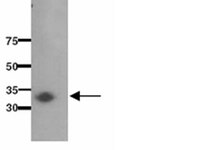AB10239 Sigma-AldrichAnti-NQO-1 Antibody
Anti-NQO-1 Antibody detects level of NQO-1 & has been published & validated for use in WB.
More>> Anti-NQO-1 Antibody detects level of NQO-1 & has been published & validated for use in WB. Less<<Prodotti consigliati
Panoramica
| Replacement Information |
|---|
Tabella delle specifiche principali
| Species Reactivity | Key Applications | Host | Format | Antibody Type |
|---|---|---|---|---|
| H, M, R, Pm | WB | Rb | Serum | Polyclonal Antibody |
| References |
|---|
| Product Information | |
|---|---|
| Format | Serum |
| Presentation | Raw rabbit serum with 0.05% sodium azide. |
| Physicochemical Information |
|---|
| Dimensions |
|---|
| Materials Information |
|---|
| Toxicological Information |
|---|
| Safety Information according to GHS |
|---|
| Safety Information |
|---|
| Storage and Shipping Information | |
|---|---|
| Storage Conditions | Maintain at -20°C in undiluted aliquots for up to 12 months from date of receipt |
| Packaging Information | |
|---|---|
| Material Size | 50 µL |
| Transport Information |
|---|
| Supplemental Information |
|---|
| Specifications |
|---|
| Global Trade Item Number | |
|---|---|
| Numero di catalogo | GTIN |
| AB10239 | 04053252469893 |







